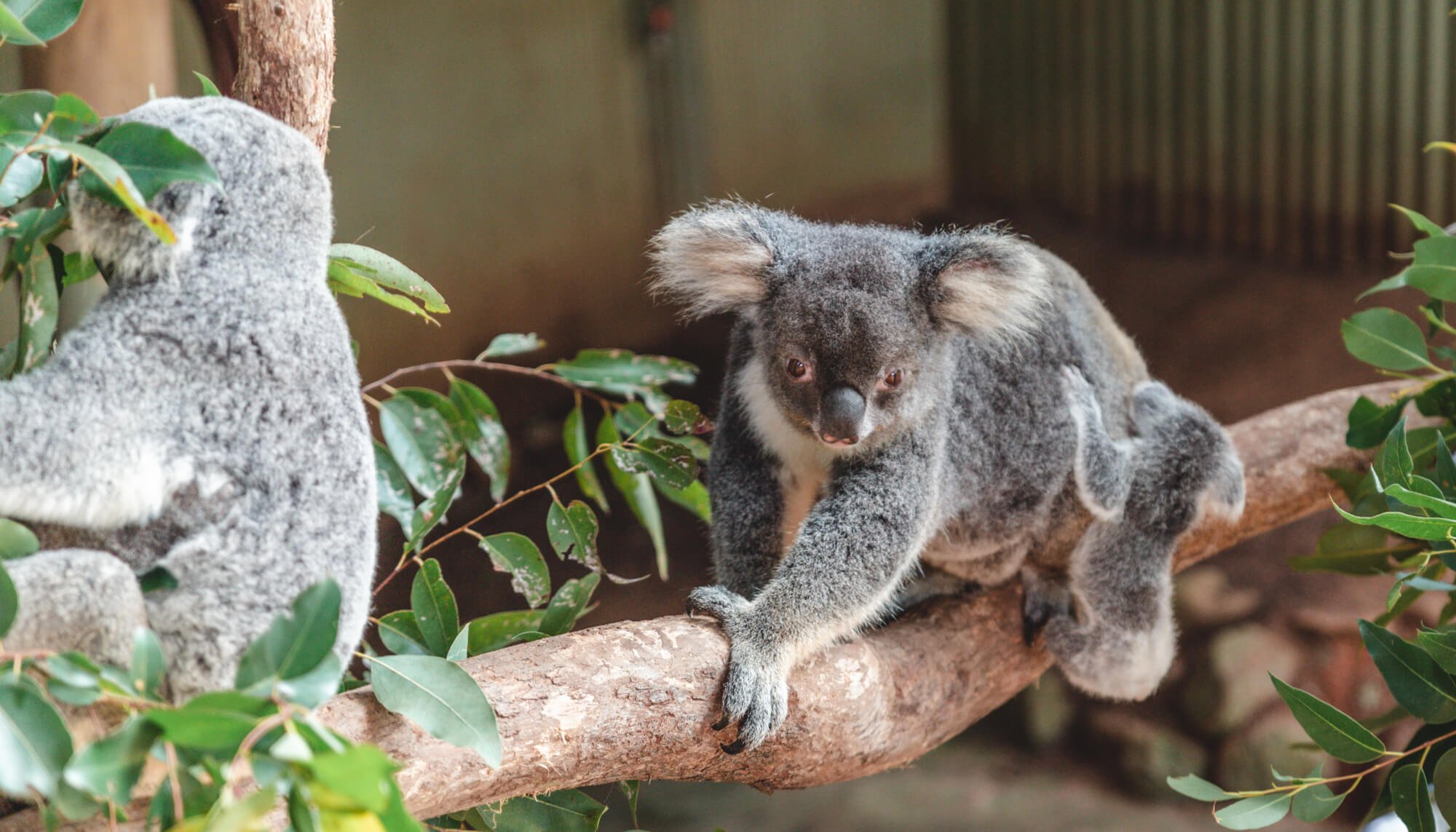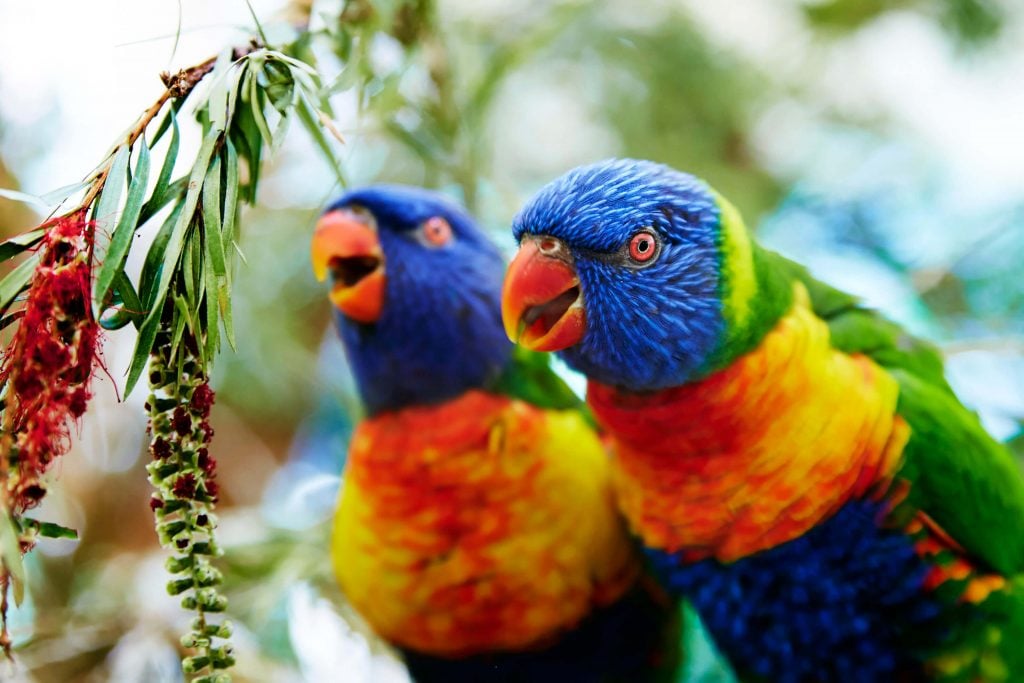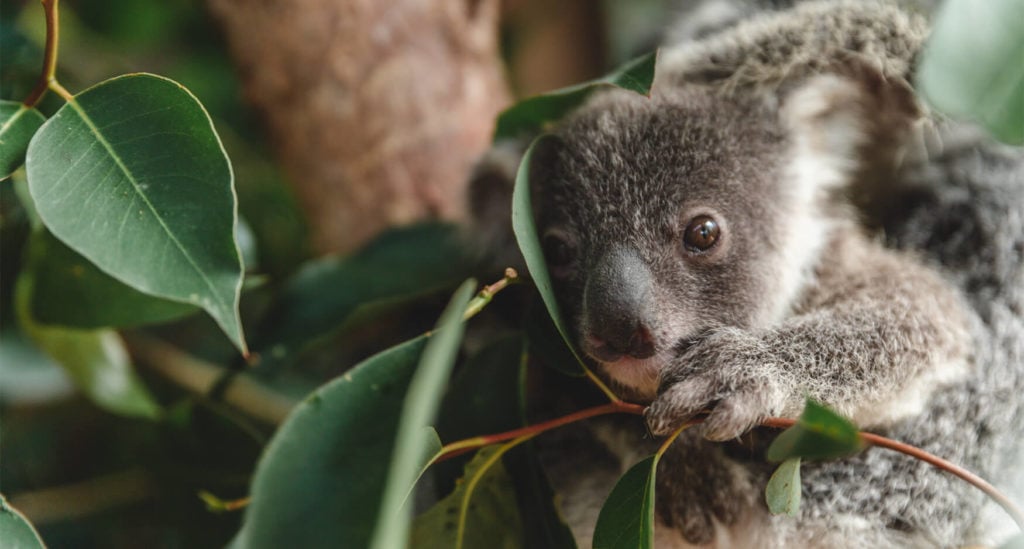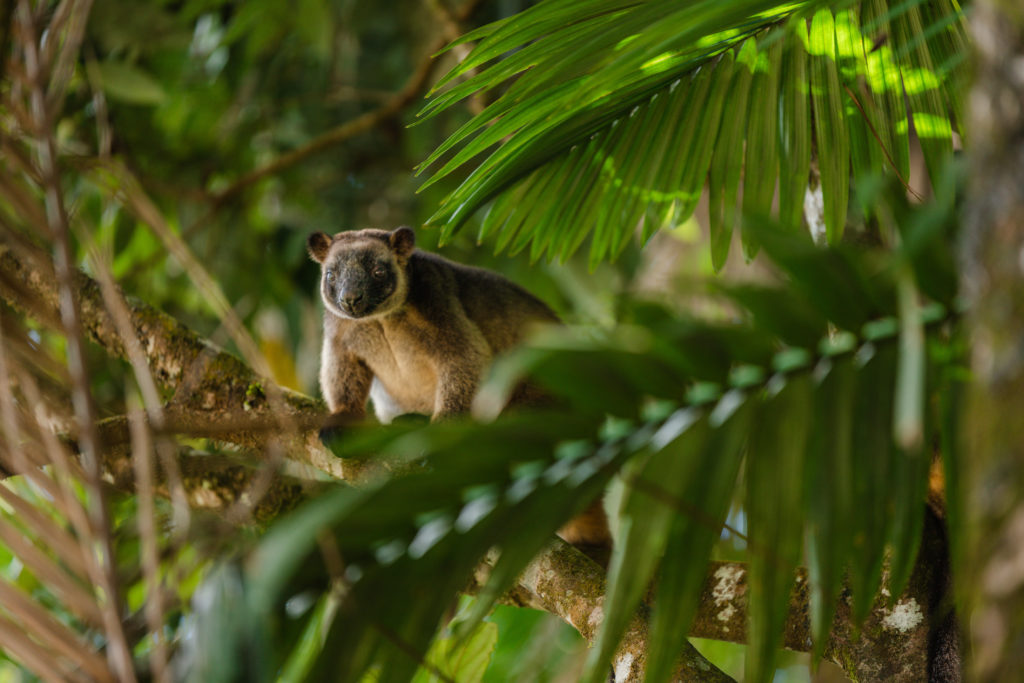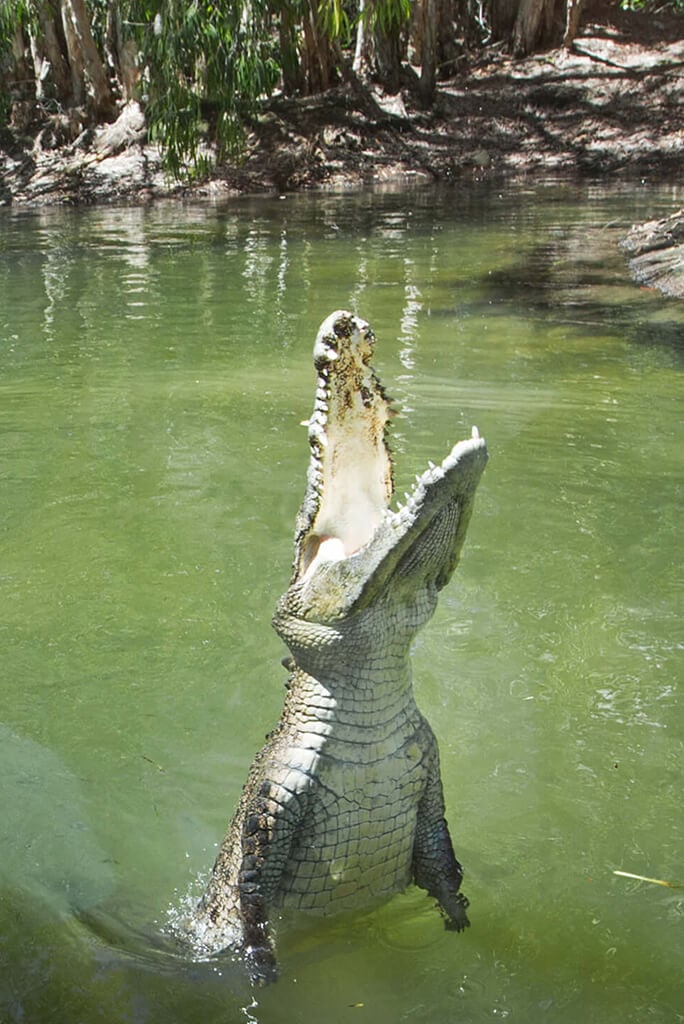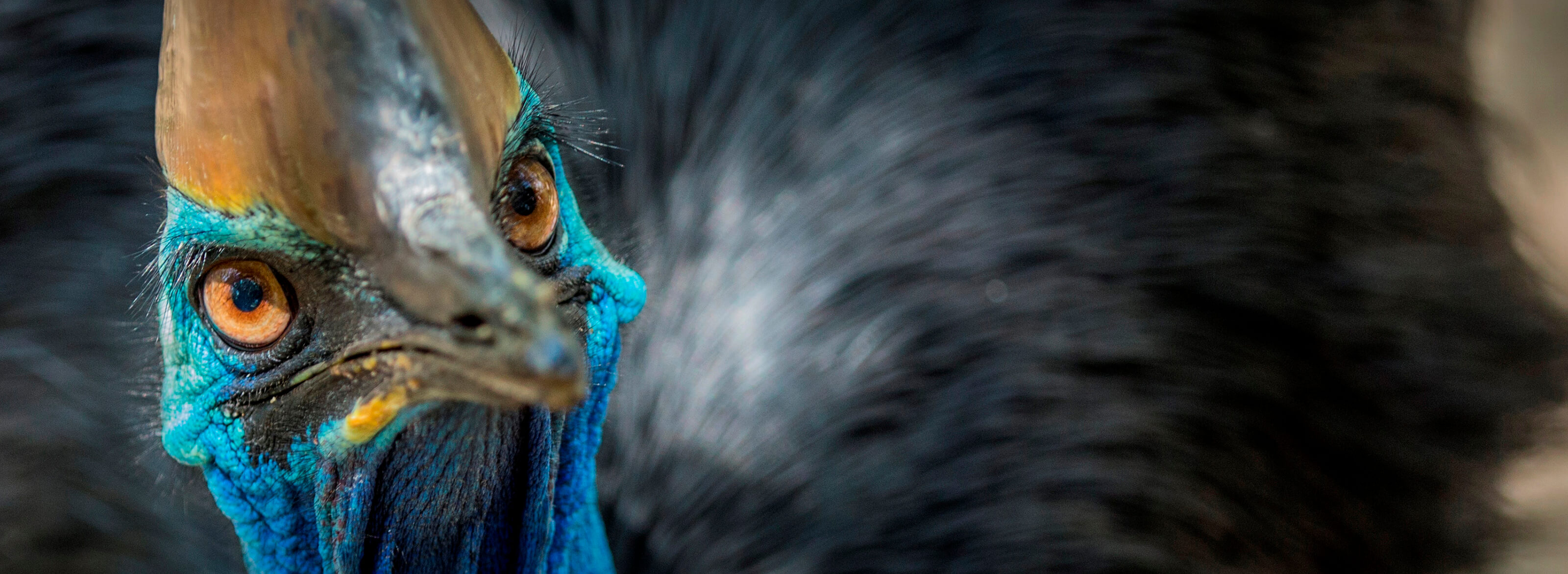TNQ Writer
You know what rates as highly as the reef and rainforest on visitor’s to-do-lists when they come to Cairns? Having a wildlife encounter.
From the furry and friendly to those with a bit more bite, there’s no shortage of iconic Australian natives to meet during your next Cairns visit. If you’re looking for the ultimate wildlife experience, we’ve prepared this handy guide for where to have a guaranteed animal encounter near Cairns.
For an array of Aussie Icons, Rainforestation Nature Park
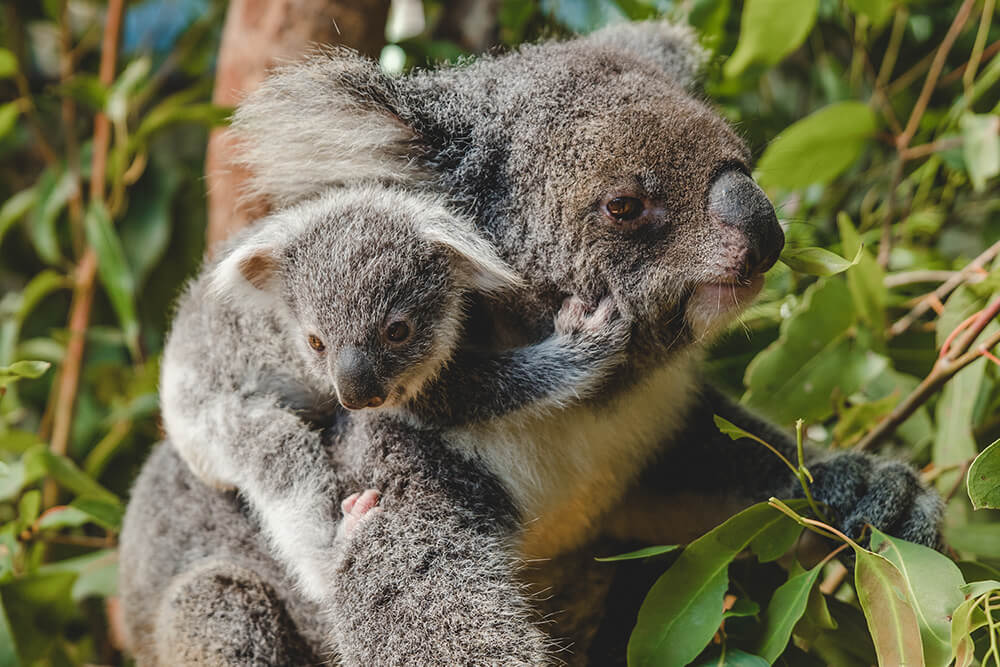
Koala & her joey
Koala & her joey
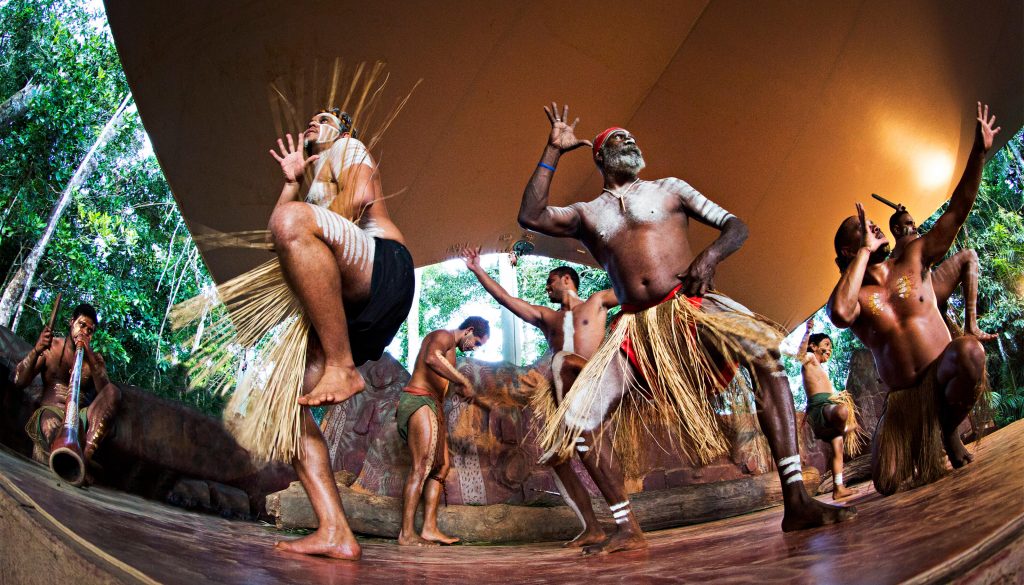
Pamagirri Aboriginal Experience
Pamagirri Aboriginal Experience
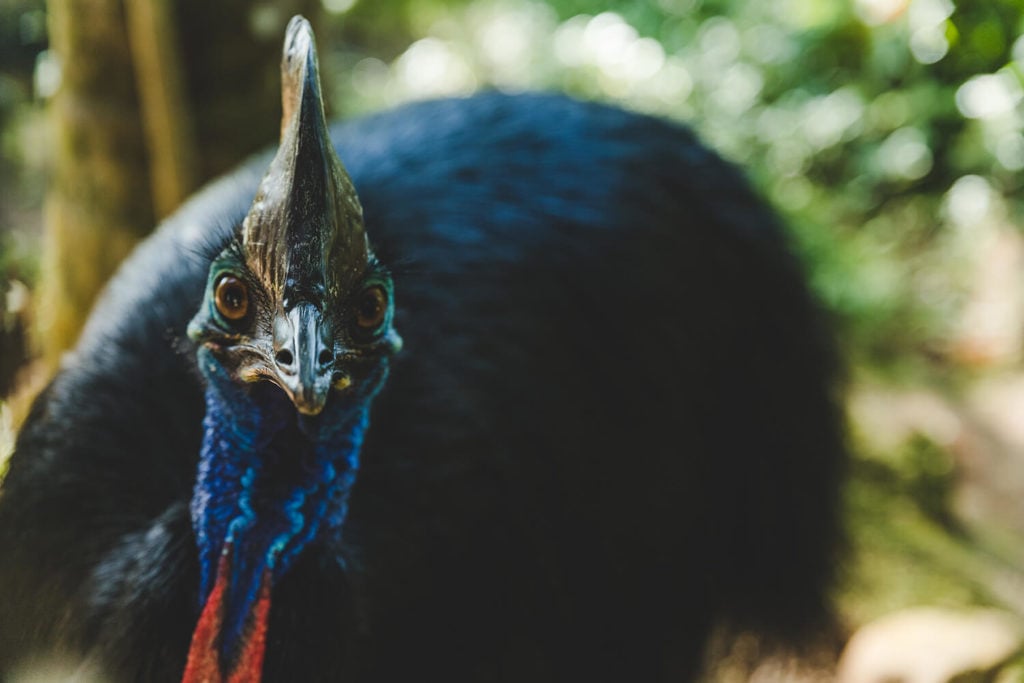
Rainforestation's resident cassowary, Kita
Rainforestation's resident cassowary, Kita
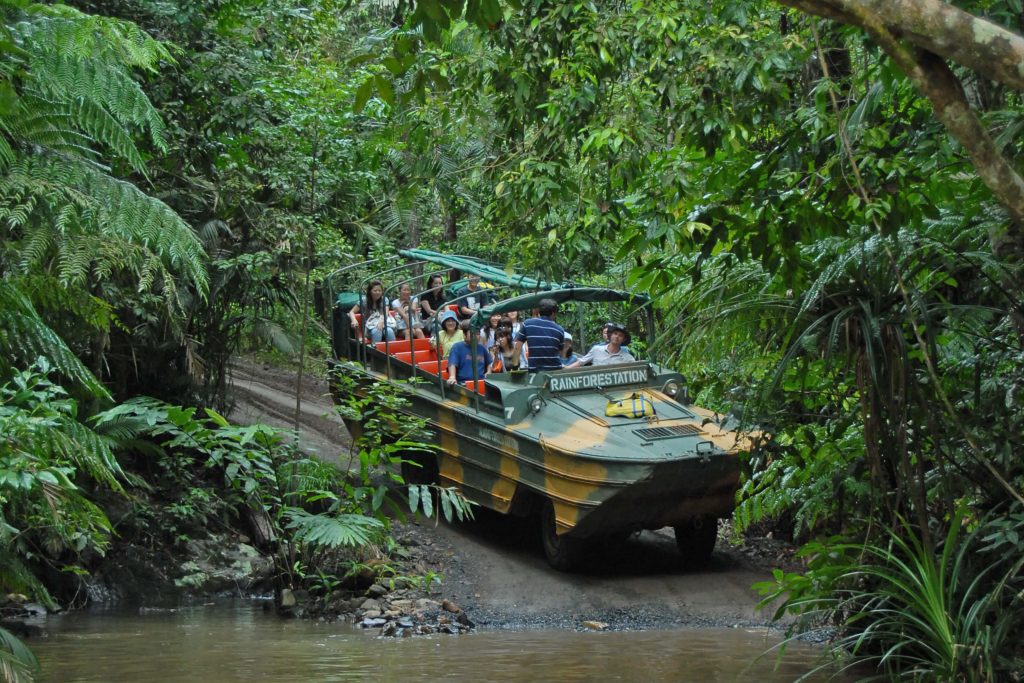
Rainforestation Army Duck tour
Rainforestation Army Duck tour
If you’re wanting to tick off Australia’s most iconic mammals during your visit to Tropical North Queensland, you’ll want to head to Kuranda’s hills. Set amongst leafy rainforest, you’ll find Rainforestation Nature Park, a wildlife sanctuary with an awards trophy cabinet that affirms why this park should sit atop your Cairns to-do list.
This park is the ultimate collection of Australian animals, with everything from koalas, dingoes, crocodile, wallabies and kangaroos to the more unusual, like their two Tasmanian devils, koala joeys and Lumholtz’s tree kangaroo, animals who you won’t get to find at any old wildlife sanctuary. You won’t have to worry about working up your step count exploring this parks’ sprawling 40 hectares, Rainforestation runs amphibious World War II Army Duck tours across the property.
Rainforestation’s connection to land and country, goes further than the animals found here. You can discover the world’s oldest surviving culture with the Pamagirri Aboriginal Experience, which celebrates Aboriginal culture through a traditional dance show, spear presentation and didgeridoo performance. You can even learn to throw a boomerang here.
For endemic species to Tropical North Queensland, Wildlife Habitat Port Douglas
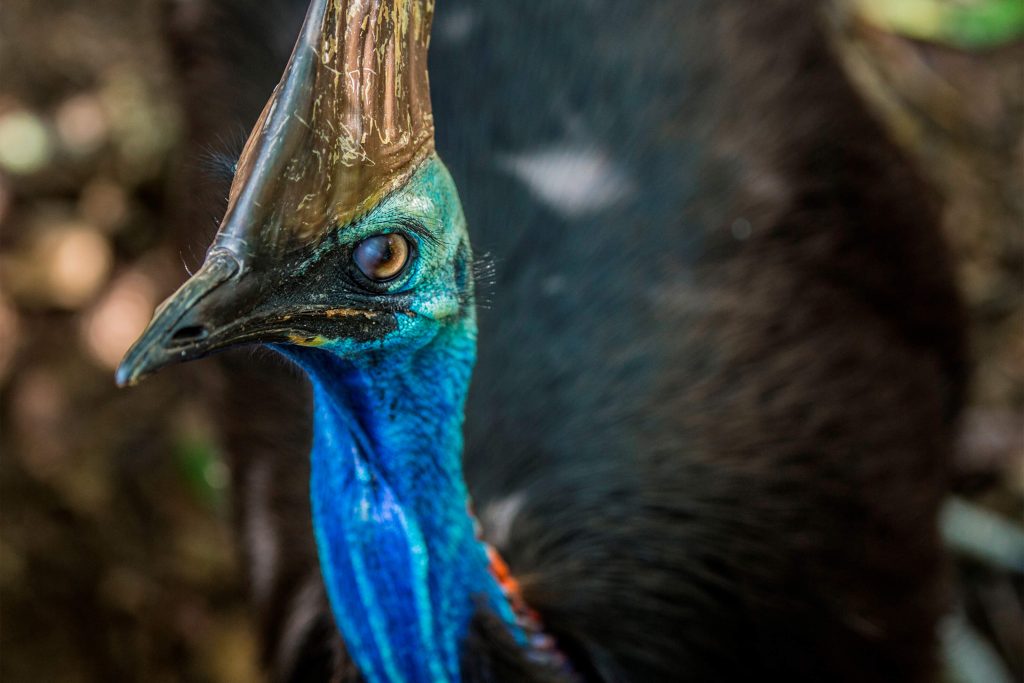
Cassowary at Wildlife Habitat Port Douglas
Cassowary at Wildlife Habitat Port Douglas
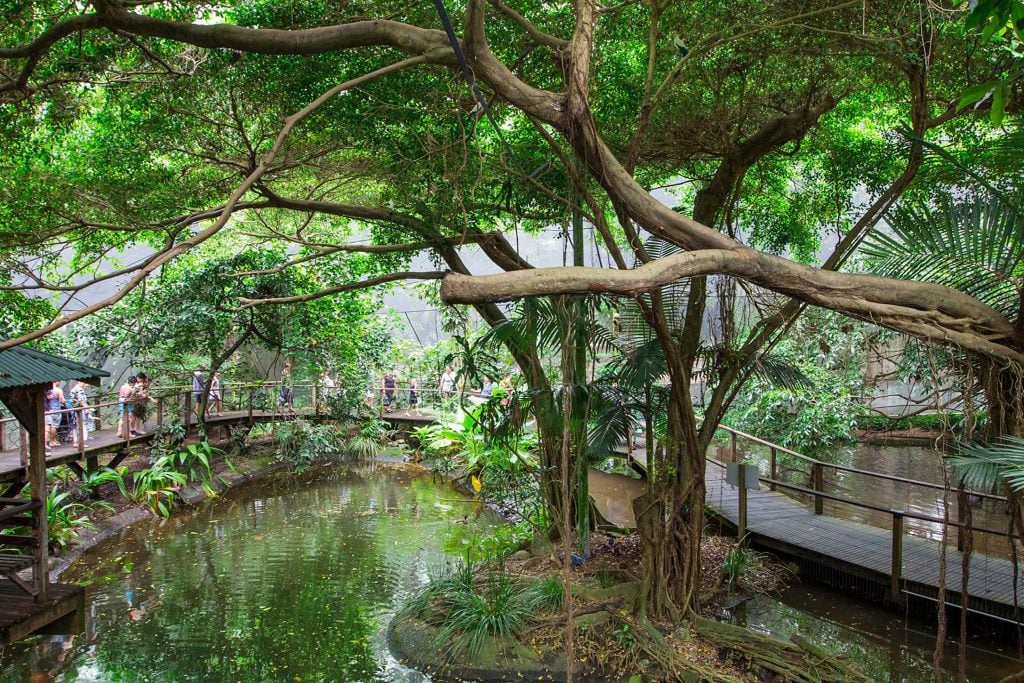
Wildlife Habitat Port Douglas
Wildlife Habitat Port Douglas
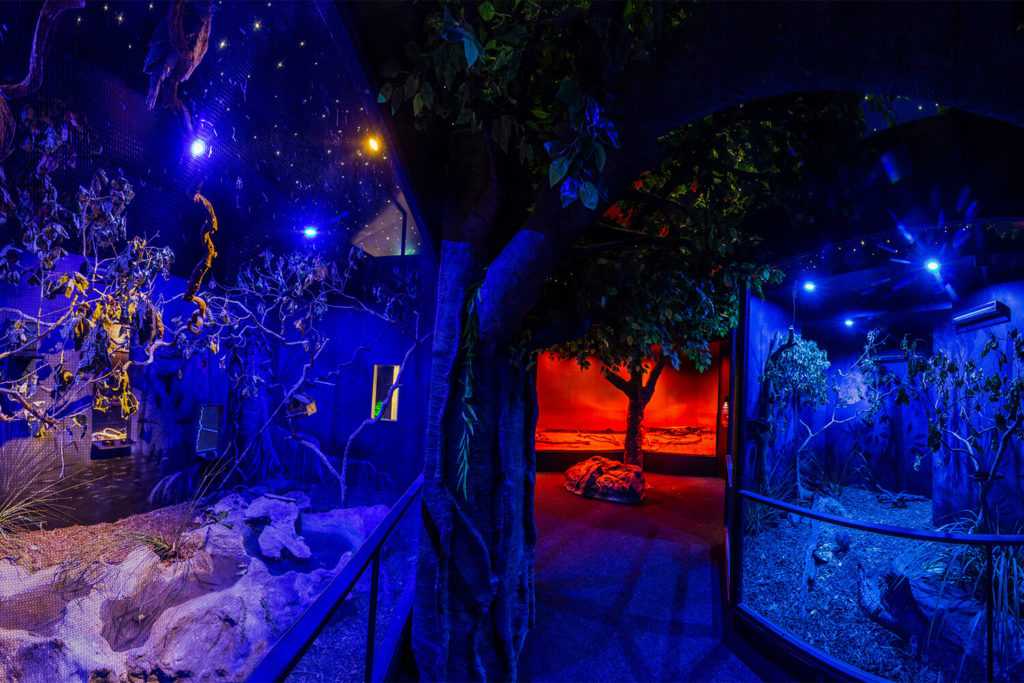
Wildlife Habitat's nocturnal exhibit
Wildlife Habitat's nocturnal exhibit
There’s only one problem with spotting Tropical North Queensland’s most famous faces in the wild – they can be elusive. If you don’t see a legendary Southern Cassowary or Lumholtz’s Tree Kangaroo in the wild, stack the odds in your favour, with a visit to Wildlife Habitat Port Douglas where you can see both, guaranteed. In fact, Wildlife Habitat Port Douglas is only one of the two zoos in the world who breed the Lumholtz’s Tree Kangaroo in captivity.
This isn’t your average wildlife sanctuary – Wildlife Habitat Port Douglas is an immersion exhibit – split across five areas which reflect landscapes within a 500km radius of Port Douglas – woodlands, savannah, wetlands, rainforest and nocturnal. Everything about this park speaks to its philosophy of observation, appreciation, and conservation. It’s even home to an onsite care centre for sick and injured animals, the Tropical Animal Rehabilitation Centre, where locals regularly drop off rescued animals in need of rehabilitation.
Wildlife Habitat Port Douglas’ role in conservation means you can holiday with a heart, knowing you’re contributing to helping injured animals on their road to recovery.
Cairns Koalas and Creatures
www.instagram.com/reel/DAKIdfbtdjy/
Koalas are one of Australias most beloved creatures and no trip to cairns in complete without meeting one of these adorable marsupials. You don’t have to travel far, with Cairns Koalas & Creatures located right in the heart of Cairns CBD. Snap a photo with a koala, then meet and learn about the other scaly, feathery and fluffy creatures that inhabit our regions rainforests, reefs and outback.
For butterflies, Australian Butterfly Sanctuary
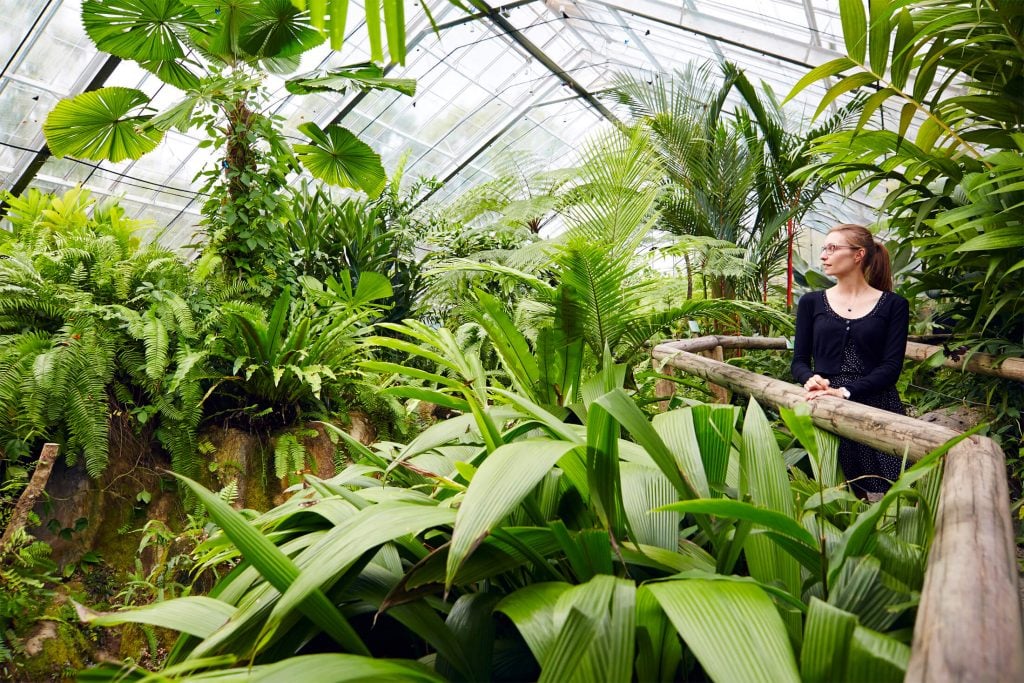
Australian Butterfly Sanctuary
Australian Butterfly Sanctuary
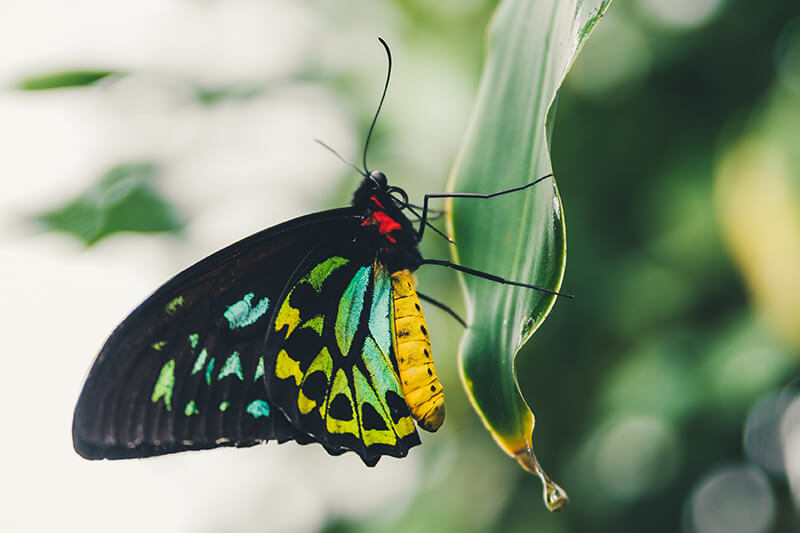
Cairns Birdwing Butterfly
Cairns Birdwing Butterfly
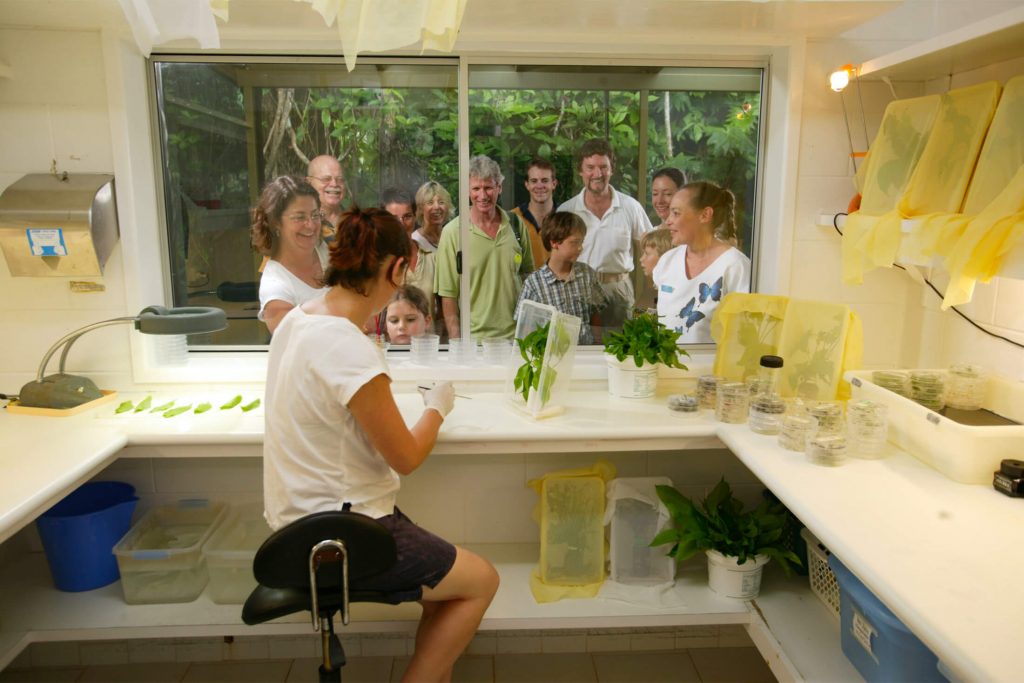
Learn all about butterflies
Learn all about butterflies
There’s more to do on your visit to Kuranda than shop up a storm at the rainforest markets. This rainforest village is home to the largest butterfly aviary in Australia, the Australian Butterfly Sanctuary. With 12 different native species and over 1500 butterflies within its dome, you’re guaranteed an experience with the region’s most famous winged creatures – the Ulysses and Cairns Birdwing.
If your understanding of the lifecycle of a butterfly extends to what you learnt in the famous children’s book, The Very Hungry Caterpillar, get ready for a crash course in insect reproduction. The team at the Australian Butterfly Sanctuary are so committed to butterfly conservation, they breed all the butterflies onsite and help educate people to ensure the future of Tropical North Queensland’s most colourful locals. Their role is important to ensuring the sustainability of the species, on a visit you will learn about which host foodplants to grow in order to help native butterfly species grow in the wild, which is the most effective way of conserving all of our species. Learn how you can do your part with a tour of the laboratory where butterflies are raised before their release.
For more animal action while exploring Kuranda, you’ll want to ensure you save time for Rainforestation, the first entry on this list.

